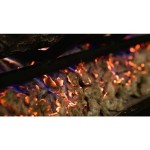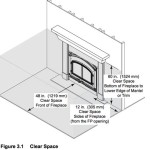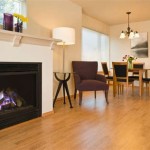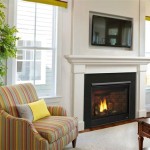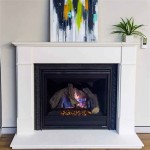```html
Colonial Fireplace Mantels: A Timeless Architectural Feature
Colonial fireplace mantels represent a significant architectural element in homes inspired by the aesthetic sensibilities prevalent between the 17th and 19th centuries. Characterized by their refined elegance and symmetrical designs, these mantels served not only as functional frames for fireplaces but also as focal points within living spaces. Understanding the defining features, historical context, and enduring appeal of colonial fireplace mantels provides valuable insight for homeowners seeking to incorporate this classic style into their residences, whether through restoration of historical properties or the introduction of traditional elements into modern construction.
Defining Characteristics of Colonial Fireplace Mantels
Several key characteristics distinguish colonial fireplace mantels from those of other periods. These mantels are typically defined by their emphasis on symmetry, balance, and a restrained ornamentation. Common elements include fluted pilasters, dentil moldings, and simple yet elegant cornices. The materials used often reflect the readily available resources of the time, with wood, particularly pine and oak, being the most prevalent. Paint finishes are common, opting for neutral tones – whites, creams, and light grays – to complement the surrounding décor. The size and scale of the mantel are typically proportionate to the size of the fireplace and the room, ensuring visual harmony.
Pilasters, vertical, flat columns that flank the fireplace opening, are a hallmark of colonial mantels. These pilasters are often fluted, featuring shallow grooves carved along their length, adding a touch of classical refinement. Dentil molding, a decorative element consisting of a series of small, rectangular blocks, is frequently found along the cornice, the uppermost projecting feature of the mantel. These details, while seemingly simple, contribute to the overall sophistication and elegance of the design. The absence of excessive ornamentation distinguishes colonial mantels from later, more elaborate styles, such as Victorian or Art Deco. The focus remains on clean lines and balanced proportions.
The selection of wood species was often dictated by regional availability and cost. Pine, readily available throughout the colonies, was a popular choice due to its affordability and ease of workability. Oak, known for its strength and durability, was also used, particularly in more substantial mantel designs. The wood was typically painted to protect it from the elements and to achieve a uniform aesthetic. The use of paint also allowed for the creation of a lighter, brighter look, which was particularly desirable in the often dimly lit homes of the colonial period. The color palette generally adhered to variations of white, cream, and gray, contributing to a sense of calm and order.
Historical Context and Evolution
The evolution of colonial fireplace mantels reflects the changing architectural influences and social trends of the period. Early colonial mantels, often found in homes built during the 17th and early 18th centuries, were relatively simple and functional. These early examples often lacked the elaborate detailing seen in later periods. As the colonies prospered and architectural styles evolved, fireplace mantels became more ornate, reflecting the growing influence of Georgian and Federal styles. The Georgian style, characterized by its symmetry, proportion, and classical detailing, had a significant impact on mantel design. Federal style mantels, which emerged in the late 18th and early 19th centuries, were even more refined, often featuring delicate carvings and intricate moldings.
The Georgian influence is evident in the increased use of classical motifs, such as pediments, pilasters, and dentil moldings. These elements, borrowed from ancient Greek and Roman architecture, added a layer of sophistication and elegance to the mantels. The Federal style brought a lighter, more delicate aesthetic, characterized by the use of slender pilasters, intricate inlaid details, and fan-shaped motifs. The availability of new materials and technologies also played a role in the evolution of mantel design. Advances in sawmilling and woodworking techniques allowed for the creation of more complex and refined details. The introduction of new paint colors and finishes also broadened the options for decorating mantels.
The regional variations in colonial fireplace mantel design reflect the diverse cultural influences and local resources present throughout the colonies. New England mantels, for example, often featured simpler designs and a greater emphasis on practicality. Southern mantels, on the other hand, tended to be more elaborate, reflecting the greater wealth and more established social hierarchy of the region. Pennsylvania German mantels often incorporated distinctive folk art motifs, such as hearts, tulips, and geometric patterns. These regional variations add to the rich and diverse history of colonial mantel design.
Enduring Appeal and Modern Applications
The enduring appeal of colonial fireplace mantels lies in their timeless elegance and ability to seamlessly blend with a variety of architectural styles. Their simple yet sophisticated designs make them a popular choice for both historic homes and contemporary residences. Colonial mantels can evoke a sense of history and tradition while providing a focal point for the room. Their versatility allows them to be adapted to suit a range of personal preferences and decorating styles. The ability to customize the paint finish and decorative accents allows homeowners to create a mantel that perfectly complements their existing décor.
In historic homes, the restoration of original colonial fireplace mantels is a common and often necessary undertaking. Preserving these historic features helps to maintain the architectural integrity of the building and to showcase its unique character. Restoration projects often involve carefully cleaning and repairing the mantel, removing layers of paint, and restoring any missing or damaged details. The use of historically appropriate materials and techniques is essential to ensure that the restoration is done correctly and that the mantel retains its original character. In some cases, it may be necessary to replicate a missing or damaged mantel based on historical documentation or existing examples.
In modern homes, colonial fireplace mantels can be incorporated as a way to add character and charm. Reproduction mantels are readily available in a variety of styles and sizes, making it easy to find one that suits the specific needs of the homeowner. These mantels can be used to create a traditional focal point in a living room, dining room, or bedroom. They can also be paired with modern furniture and accessories to create an eclectic and interesting look. The use of salvaged or reclaimed wood can add an extra layer of authenticity and character to a reproduction mantel. The incorporation of colonial mantels into modern homes can be a way to bridge the gap between the past and the present and to create a space that is both stylish and timeless.
The installation of a colonial fireplace mantel requires careful planning and attention to detail. It is important to ensure that the mantel is properly supported and that it is installed in accordance with local building codes. The fireplace opening should be properly sized and sealed to prevent drafts and to ensure efficient heating. The surrounding area should be fireproofed to protect against sparks and embers. Professional installation is recommended to ensure that the mantel is installed safely and correctly. The long-term maintenance of a colonial fireplace mantel involves regular cleaning and inspection. The paint finish should be touched up as needed to prevent chipping and cracking. The mantel should be inspected for signs of wood rot or insect damage. Proper maintenance will help to ensure that the mantel remains a beautiful and functional feature of the home for many years to come.
```
Fireplace Fronts Colonial Mantel

10 Fireplace Designs We Love Vanderhorn Architects

Fireplace Surrounds Traditional Mantels Chicago By Decorators Supply Corp Houzz Mantel

Colonial Home Painted Wood Mantelpiece House Decor Interior

Period Fireplaces Sunderland Homes

Colonial Revival Mantel Kuiken Brothers

Period Fireplaces Sunderland Homes

Colonial Revival Mantel Windsorone Cosy Living Room Design

Fireplace Mantel Designs Neo Gothic Victorian Louis Xv Colonial

Fire Place Mantels

